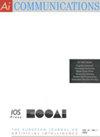Agent-based modelling for Urban Analytics: State of the art and challenges
IF 1.4
4区 计算机科学
Q4 COMPUTER SCIENCE, ARTIFICIAL INTELLIGENCE
引用次数: 1
Abstract
Agent-based modelling (ABM) is a facet of wider Multi-Agent Systems (MAS) research that explores the collective behaviour of individual ‘agents’, and the implications that their behaviour and interactions have for wider systemic behaviour. The method has been shown to hold considerable value in exploring and understanding human societies, but is still largely confined to use in academia. This is particularly evident in the field of Urban Analytics; one that is characterised by the use of new forms of data in combination with computational approaches to gain insight into urban processes. In Urban Analytics, ABM is gaining popularity as a valuable method for understanding the low-level interactions that ultimately drive cities, but as yet is rarely used by stakeholders (planners, governments, etc.) to address real policy problems. This paper presents the state-of-the-art in the application of ABM at the interface of MAS and Urban Analytics by a group of ABM researchers who are affiliated with the Urban Analytics programme of the Alan Turing Institute in London (UK). It addresses issues around modelling behaviour, the use of new forms of data, the calibration of models under high uncertainty, real-time modelling, the use of AI techniques, large-scale models, and the implications for modelling policy. The discussion also contextualises current research in wider debates around Data Science, Artificial Intelligence, and MAS more broadly.基于主体的城市分析模型:现状与挑战
基于主体的建模(ABM)是更广泛的多主体系统(MAS)研究的一个方面,它探索个体“主体”的集体行为,以及它们的行为和相互作用对更广泛的系统行为的影响。该方法已被证明在探索和理解人类社会方面具有相当大的价值,但在很大程度上仍局限于学术界。这在城市分析领域尤为明显;它的特点是将新形式的数据与计算方法相结合,以深入了解城市进程。在《城市分析》中,ABM作为一种有价值的方法越来越受欢迎,它可以理解最终推动城市发展的底层相互作用,但迄今为止,利益相关者(规划者、政府等)很少使用ABM来解决实际的政策问题。本文介绍了一组隶属于伦敦艾伦图灵研究所城市分析计划的ABM研究人员在MAS和城市分析界面应用ABM的最新进展。它解决了围绕建模行为、新数据形式的使用、高不确定性下模型的校准、实时建模、人工智能技术的使用、大规模模型以及对建模政策的影响等问题。讨论还将当前关于数据科学、人工智能和MAS的更广泛辩论的研究置于更广泛的背景下。
本文章由计算机程序翻译,如有差异,请以英文原文为准。
求助全文
约1分钟内获得全文
求助全文
来源期刊

AI Communications
工程技术-计算机:人工智能
CiteScore
2.30
自引率
12.50%
发文量
34
审稿时长
4.5 months
期刊介绍:
AI Communications is a journal on artificial intelligence (AI) which has a close relationship to EurAI (European Association for Artificial Intelligence, formerly ECCAI). It covers the whole AI community: Scientific institutions as well as commercial and industrial companies.
AI Communications aims to enhance contacts and information exchange between AI researchers and developers, and to provide supranational information to those concerned with AI and advanced information processing. AI Communications publishes refereed articles concerning scientific and technical AI procedures, provided they are of sufficient interest to a large readership of both scientific and practical background. In addition it contains high-level background material, both at the technical level as well as the level of opinions, policies and news.
 求助内容:
求助内容: 应助结果提醒方式:
应助结果提醒方式:


